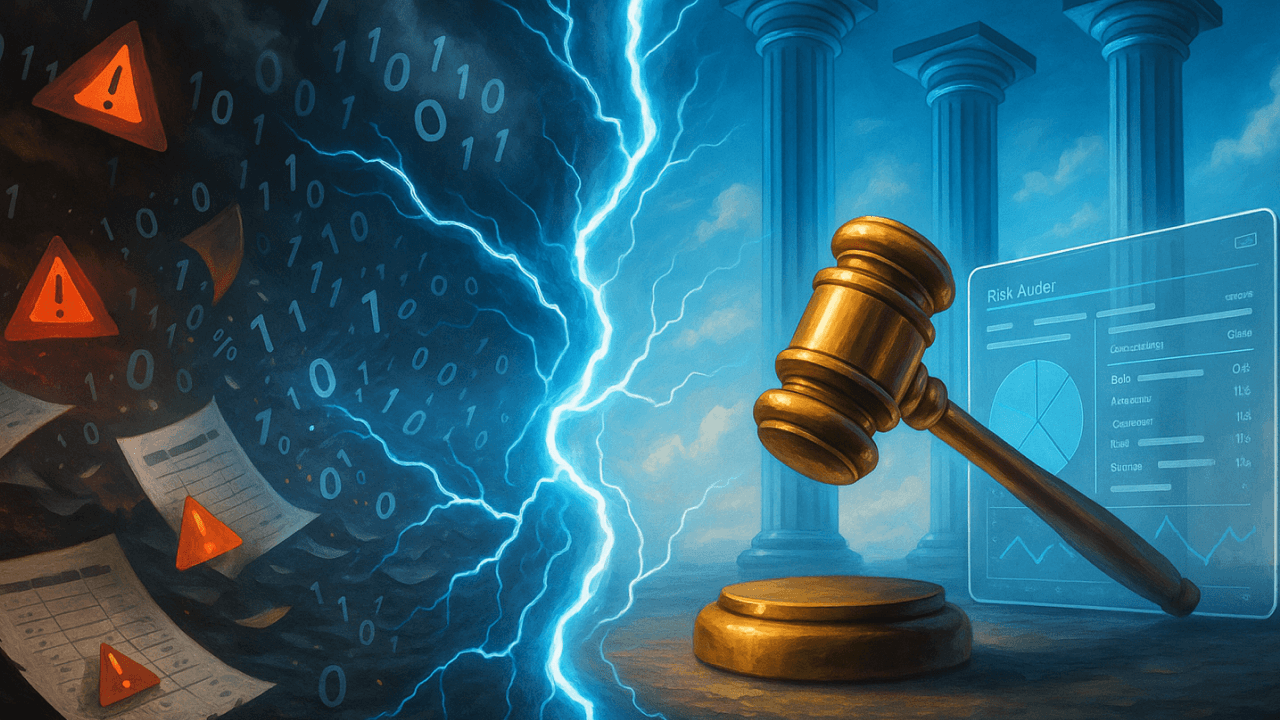

August 8, 2025
If you can’t explain your $68 million cyber risk figure in under two minutes, you don’t have a model — you have a guess.
It’s a scenario that has played out too many times: a CISO walks into the boardroom with a beautifully designed slide showing a quantified cyber risk number. The CFO asks, “How exactly did we get here?” Silence. The credibility gap swallows the conversation whole.
This isn’t just an isolated problem — it’s an industry‑wide failure. For years, CRQ has been sold as the bridge between cybersecurity and the business, yet too often it collapses under scrutiny.
That ends now.
In 2025 and beyond, defensibility is not an add‑on — it is the standard. The leaders in this space will be the ones who can produce clear, explainable, high‑fidelity telemetry‑backed risk numbers on demand. Anything less will be ignored by your board, challenged by your auditors, and dismissed by your regulators.
Cyber Risk Quantification promises a lot: align security with business priorities, justify investments, and speak the language of finance. You can run the most sophisticated models in the world, but if you can’t prove how you got your number, you’re not doing risk quantification. You’re doing guesswork with better graphics.
A defensible CRQ process is the baseline. It must be:
If you can’t do those three things, you’re not meeting the new standard.
We’re not talking about models that can survive scrutiny. We’re talking about models that define what scrutiny looks like.
The new benchmark for defensible CRQ means you can:
This isn’t optional anymore. It’s the price of admission for credibility in risk reporting
| Pillar | Without Defensibility & Explainability |
| Transparent Assumptions | Stakeholders see numbers as arbitrary. Without clarity on how telemetry was interpreted and weighted, trust collapses. |
| Data Lineage & Provenance | Numbers become unprovable during audits, creating “garbage in, garbage out” risk. |
| Scenario Explainability | Risk priorities appear subjective, leading to disputes and poor resource allocation. |
| Model Validation & Benchmarking | Figures drift away from reality without challenge, eroding credibility with leadership and regulators. |
| Consistency Across Time | Volatile results undermine confidence, shifting attention from risk reduction to questioning the method. |
| Regulatory Alignment | Regulatory reviews turn into defensive firefights instead of confident, evidence‑backed conversations. |
| Actionability | Quantification becomes academic — impressive numbers with no direct path to reduced exposure. |
Defensibility fails when decision-makers are asked to trust a number without being able to work backwards from that number to see the exact telemetry, key assumptions, and calculations that produced it.
This can happen with overly complex manual models — and it can also happen with AI-driven ones.
The Role of Specialized AI:
AI’s role in defensibility:
The takeaway: whether manual or automated, the path to defensibility is explainability + high‑fidelity telemetry.
The board doesn’t want technical minutiae — they want a clear business narrative:
“We reduced our potential annualized loss exposure by $24M with a $6M mitigation program that paid for itself in under a year.”
That’s not a metric. That’s a narrative backed by telemetry, assumptions, and a defensible calculation. It’s the difference between getting approval and getting ignored.
When CRQ is truly defensible, you get:
Ask yourself:
If the answer to any of these is “no,” your CRQ isn’t defensible. And in today’s environment, that’s not just a weakness — it’s a liability.